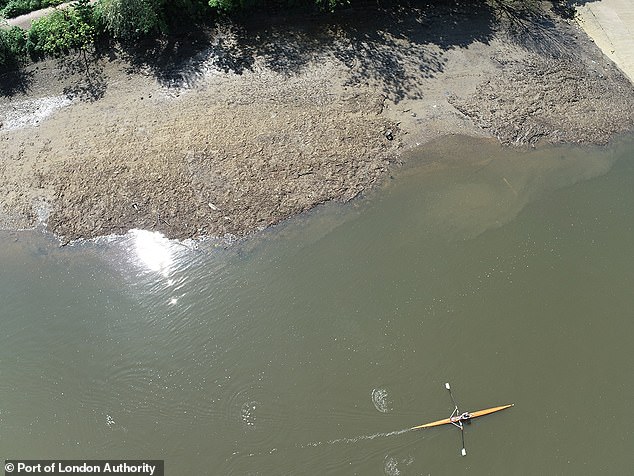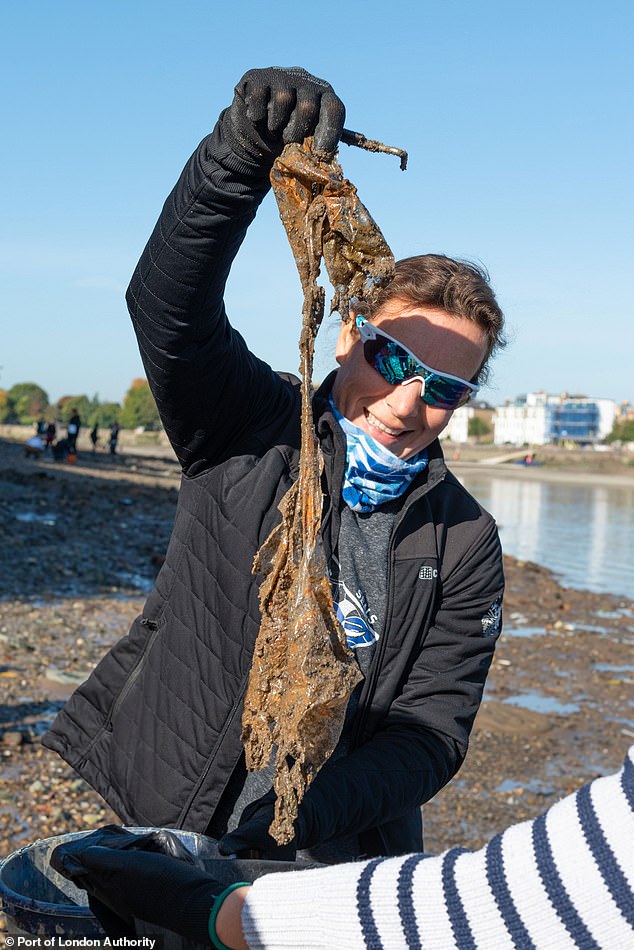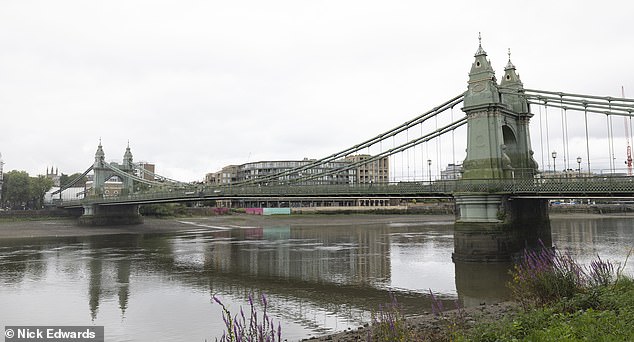A huge ‘Wet Wipe Island’ in the River Thames is set to be removed after 180-ton of the bathroom items have piled up underwater.
The ‘island’, which is the size of two tennis courts and weighs the same as two double decker buses, is said to have harmed the wildlife and ecology of the river.
The island sits along a 820ft stretch of the Thames near Hammersmith Bridge.
An operation to remove the 180tons of congealed wet wipes that formed the island is expected to take up to a month to complete.
The removal is will be led and co-ordinated by the Port of London Authority in collaboration with Thames Water.
Until now, efforts to clean wet wipes from the river have relied on people removing them by hand.
Volunteers from Thames 21 have monitored the island since 2017 and have already collected more than 140,000 wet wipes.
The group has called for the banning of plastic wet wipes, citing the damage it can do to the environment.

A huge 180 ton ‘Wet Wipe Island’ is set to be removed from the River Thames
For years the group has also called for the removal of the disgusting island underneath surface of the Thames.
St Paul’s School, Barnes is supporting the clean-up and giving access to its grounds to allow the eight-ton excavator to carefully remove the ‘island’, which is one metre high in places, from the foreshore when the tide is low.
The wet wipes and other pollutants will then be taken away in skips and responsibly disposed of.
Thames Water recently announced a further £1.8billion investment to improve river health across London, and last year connected its £4.6 billion Thames Tideway Tunnel to support the reduction of sewage discharges into the Thames.
Port of London Authority’s Director of Sustainability, Grace Rawnsley, said: ‘For too long, “Wet Wipe Island” in Hammersmith has been a source of environmental harm and an embarrassment to the capital.
‘Inspired by the work of volunteers at Thames 21, we decided to take a lead in co-ordinating action to remove this unsightly and harmful mess.
‘This is the first time anyone has sought to execute a mass, mechanical removal of wet wipes in this way.
‘We want a cleaner, healthier tidal Thames and will continue to work with all interested parties to secure that. And we will continue to bring innovation and investment to help the world’s greatest river thrive.’
Thames Water’s Head of Tideway Integration Group, John Sullivan, said: ‘Our purpose is to deliver life’s essential service, so our customers, communities and the environment can thrive.

Charity Thames 21 have already removed 140,000 wet wipes from the river and has called for plastic wet wipes to be banned
‘We are pleased to collaborate with the PLA and Thames21 to remove this mass of wet wipes.
‘For us it is a visible reminder of the damage caused by putting the wrong things down the toilet because flushing something non-biodegradable like a wet wipe doesn’t just make it disappear.
‘Blockages caused by wipes are a leading cause of pollution and we remove an estimated 3.8 billion wipes from our network each year.
‘We all have a role to play in ensuring that people can enjoy our rivers. Over the next five years Thames Water is targeting a record £9.5 billion (in 2022/23 prices) of investment across our wastewater assets to meet the demands that come with population growth and climate change.’
Chris Coode, CEO at Thames21, said: ‘Plastic wet wipes have no place in our rivers or natural environment, so it’s terrific news that action is being taken to remove wet wipe island in the Thames.
‘This vital move is a crucial step towards protecting the health of the River Thames and its wildlife, as it will reduce the introduction of microplastics into the environment from this site.
‘Thames21 and its dedicated volunteers have been building evidence for eight years. We want to give our volunteers a huge shout-out for their persistence. This has been a massive piece of work!
‘Thames21 has been pushing for a ban on plastics in wet wipes. However, we would like to see more systemic change to tackle the issue of plastics entering the environment via wet wipes and other sanitary waste.

The island sits along a 250-metre stretch of the Thames near Hammersmith Bridge
‘We want producers to get serious about plastic-free alternatives to wet wipes. We ask water companies to increase their investment in screening to prevent wet wipes and other sanitary waste which contains plastic entering the environment.
‘We’d also like to see a step-change in their investments in upgrading sewage infrastructure to prevent overflows.
‘We’d like to remind people to bin their sanitary waste and wet wipes, not flush them down the toilet, so that they don’t enter our wastewater system.
‘By working together, we can achieve great things for rivers, wildlife and people. Let’s do it!’
Fleur Anderson, MP for Putney, Southfields, Roehampton and Wandsworth Town, said: ‘This is a huge moment, after years of campaigning, wet wipe island hopefully is no more! It’s so long overdue and very welcome.
There was a national outcry at this monstrosity in the Thames – caused by plastic wet wipes, which cause massive damage to our environment and our sewer systems.
‘The ban I’ve introduced will mean 3.8 billion wipes removed from the network every year. A win for our waters, sewers and environment’












